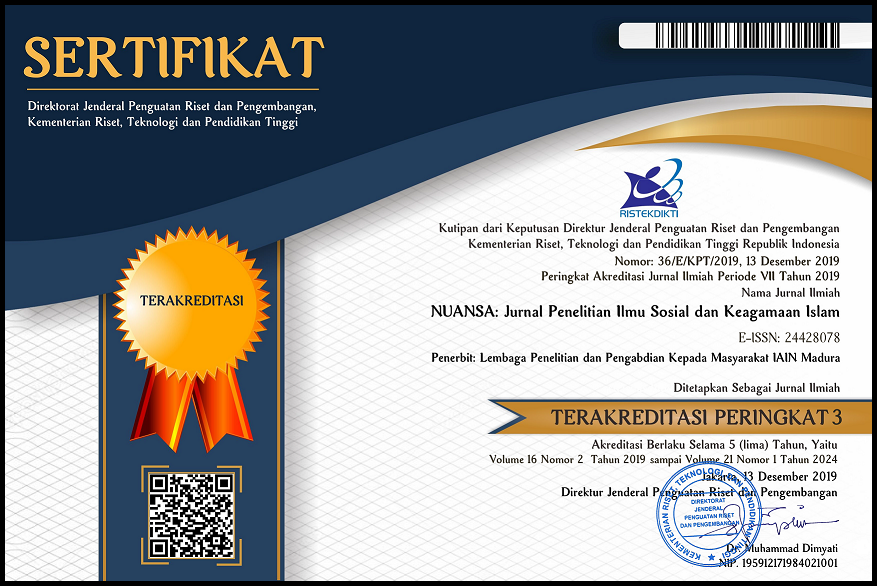PEMBERDAYAAN ANAK JALANAN DALAM PANDANGAN ISLAM
 Abstract views: 306
,
Abstract views: 306
,
 PDF downloads: 364
PDF downloads: 364
Abstract
Downloads
References
Ambar Teguh Sulistiyani, Kemitraan dan Model-Model Pemberdayaan, Yogyakarta, Gava Media: 2004
Jim Ife, Human Rights From Below: Achieving Rights Through Community Development, USA: Cambridge University Press, 2009
Mary Nash, Robyn Munford dan Kieran O’Donoghue, Social Work Theories In Action, London: Jessica Kingsley Pubisher, 2005
M. C. Hokenstad dan James Midgley (Eds), Issues in International Social Work: Global Challenges for a New Century, USA, NASW Press: 1997
Muhammad Nashiruddin al-Albani, Shahih Sunan Tirmidzi: Seleksi Hadist Shahih dari Kitab Sunan Tirmidzi, terj. Fahrurrazi, Jakarta: Pustaka Azzam, 2006
Nashaat Hussein, Street Children in Egypt: Group Dynamics and Subcultural Constituents, Cairo Paper In Social Science, Vol. 26, No. 2, Summer 2003
Sheila B. Kamerman, Shelley Phipps dan Asher Ben-Arieh (Eds), From Child Welfare to Child Well-Being: an International Perspective on Knowledge in the Service of Policy Making, Tel Aviv: Springer, 2010
The journal operates an Open Access policy under a Creative Commons Attribution-NonCommercial 4.0 International License (CC-BY-NC) 
Authors who publish with this journal agree to the following terms:
- Authors retain copyright and grant the journal right of first publication with the work simultaneously licensed under a Creative Commons Attribution License that allows others to share the work with an acknowledgement of the work's authorship and initial publication in this journal.
- Authors are able to enter into separate, additional contractual arrangements for the non-exclusive distribution of the journal's published version of the work (e.g., post it to an institutional repository or publish it in a book), with an acknowledgement of its initial publication in this journal.
- Authors are permitted and encouraged to post their work online (e.g., in institutional repositories or on their website) prior to and during the submission process, as it can lead to productive exchanges, as well as earlier and greater citation of published work.






















